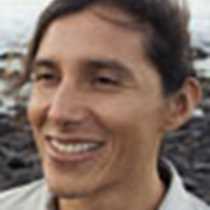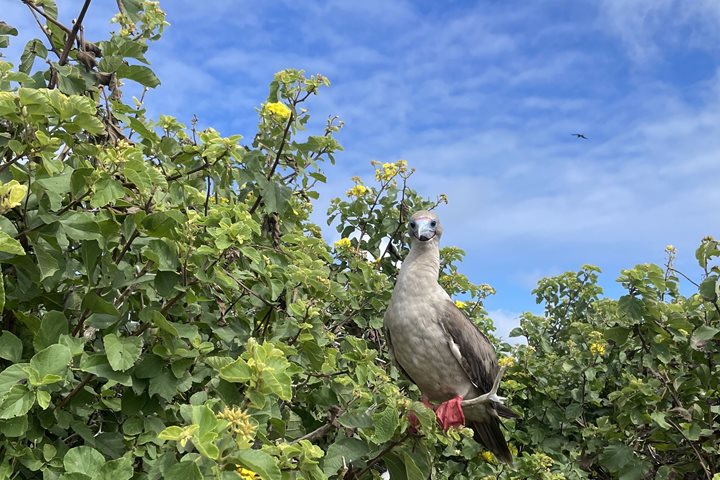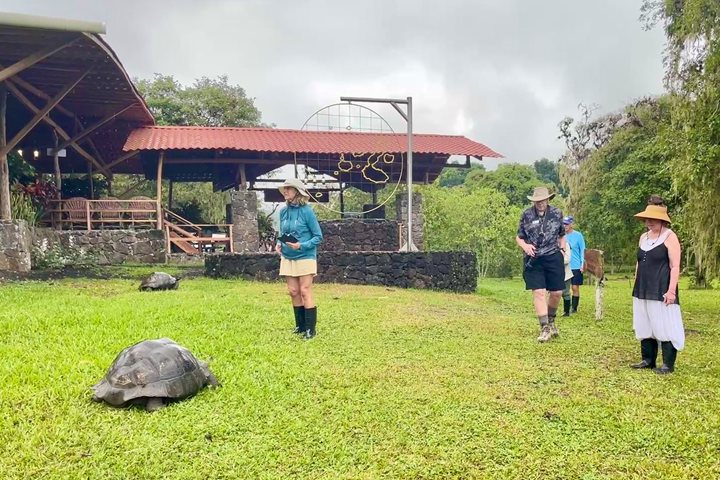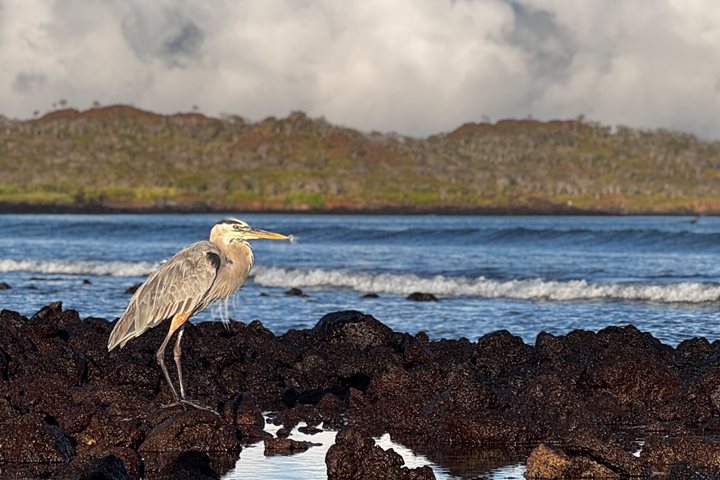Today we woke up at Darwin´s Bay in Genovesa Island. This island is a collapsed volcano and is the northernmost island of the archipelago that we visited during this expedition. Photographers had an early visit to Darwin´s beach where they took advantage of the morning light to practice their photography skills and learn more tips with the experts onboard. After breakfast, guests disembarked for a natural history adventure. This visit offered a unique opportunity to see many species of sea birds, including the exotic red-footed boobies, two species of frigate birds, Nazca boobies, short-eared owls and swallow-tailed gulls and a few species of Darwin’s finches. After lunch, some guests had their last snorkeling and paddle boarding sessions of the trip, while the young explorers enjoyed learning Zodiac lessons around the calm waters of the bay. The day finished with a natural history walk at Prince Phillip`s steps in search of the short-eared owl that inhabit this area of the island, hunting for storm petrels. During this visit, we could also observe the fur seal, the second species of sea lion that we found in this trip. After this walk, we went back for a farewell cocktail on board to celebrate our exciting week in Galapagos.
5/29/2025
Read
National Geographic Gemini
Genovesa Island
Genovesa is considered one of the Galapagos crown jewels, and today it was showing off all of its splendor. Immediately after breakfast we put on our sturdy shoes and set out to explore Prince Philip’s Steps. This area is known for opportunities to observe not only large colonies of nesting Nazca and red-footed boobies, but maybe, just maybe, the short-eared owl which exhibits diurnal behavior on this island. After this walk we got ready for a dip in the Pacific Ocean and snorkeling along the inner coast of this caldera. The afternoon was equally amazing as we disembarked to explore Darwin Bay, along a short and easy trail that was packed with wildlife. Here we observed not only nesting frigatebirds, red-footed boobies, and Nazca boobies, but also a few yellow-crowned night herons. It was another incredible afternoon in the Galapagos Islands.







